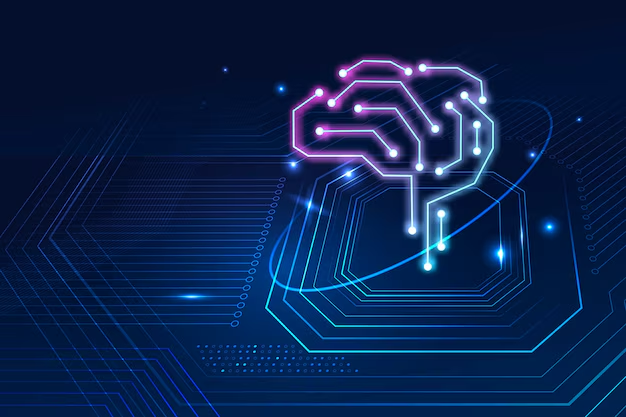Batch and Offline Machine Learning: What Sets Them Apart
 Kshitij Shresth
Kshitij Shresth
In the realm of machine learning, how we process data can significantly impact the performance of models. Both batch and online learning methods have their unique strengths and are suited for different types of machine learning tasks. Batch learning is ideal for scenarios where data is static and comprehensive training is required, while online learning is better for dynamic environments that demand real-time adaptability. Understanding the specific needs of your application and the nature of your data will help you choose the most appropriate method to achieve optimal performance.
Batch Learning
Batch learning, also known as offline learning, involves training a machine learning model on a large dataset all at once. The model is trained using the entire dataset which remains static throughout the training process. There is no incremental training. If we train massive data on the server at once it would take a lot of time. The ML engineer independently trains the model and the trained model is deployed to the production environment.
Advantages:
Comprehensive Training: Since the model sees the entire dataset, it can learn complex patterns and relationships. It is also easier to implement.
A language translation model can be trained on a vast corpus of text, learning intricate linguistic patterns and providing highly accurate translations.
Optimized Performance: Models trained on large datasets can achieve high accuracy and performance.
Image recognition systems, like those used in medical imaging to detect diseases, benefit from high accuracy due to training on extensive labeled datasets.
Consistency: The model is not frequently updated, ensuring stable performance once deployed.
A fraud detection system for credit cards, trained on historical fraud data, provides consistent performance without frequent updates, reducing the risk of unexpected behavior.
Disadvantages:
Time-Consuming: Training on large datasets can be time-intensive and computationally expensive.
Training a deep learning model on millions of images for object detection can take days or even weeks, requiring significant computational resources.
Inflexibility: Once trained, the model does not adapt to new data unless retrained.
The Netflix recommendation engine needs to incorporate new shows regularly. Batch learning would require retraining the entire model frequently, making it unsuitable for rapidly evolving content libraries.
Storage: Requires substantial storage capacity to handle large datasets.
Maintaining and storing extensive datasets for customer behavior analysis in retail can be costly and challenging, requiring robust data storage solutions.
Online Learning
Involves training a machine learning model continuously as new data arrives. The model updates incrementally, learning from one data point or a small batch of data at a time. It is dynamically trained with new data while the model is deployed on the server.
Advantages:
Adaptability: The model adapts to new data, making it suitable for dynamic environments.
SwiftKey keyboards improve performance over time, offering personalized suggestions based on past typing habits, adapting to the user’s evolving language use.
Efficiency: Requires less computational power and storage, as it processes data in small increments.
An online recommendation system for an e-commerce site can update its model with each user's browsing and purchase history without needing to retrain on the entire dataset.
Real-Time Learning: Enables real-time updates and predictions, crucial for applications like stock market analysis or fraud detection where new patterns are constantly emerging.
A stock trading algorithm that updates its model with real-time market data can make timely decisions, reacting to market fluctuations as they happen.
Disadvantages:
Potential Instability: Frequent updates can lead to instability if not managed properly.
A news recommendation system that updates too frequently might show erratic behavior, recommending less relevant or outdated articles if not properly controlled.
Limited Context: Since the model processes data incrementally, it may not capture long-term dependencies as effectively as batch learning.
Anomaly detection in network security might miss subtle, long-term patterns if it only considers recent data points, leading to less effective detection of sophisticated attacks.
Complexity: Implementing an online learning system can be more complex due to the need for continuous monitoring and updating.
Managing an online learning system for real-time ad placement involves continuous data streams, requiring sophisticated infrastructure and constant fine-tuning to ensure optimal performance.
A Hybrid Approach

Sometimes neither batch learning nor online learning alone is sufficient to achieve optimal performance. Combining both methods can leverage the strengths of each approach leading to more robust and adaptive models. A common technique used is initially using batch training then retraining periodically.
The model is initially trained using batch learning on a large, static dataset, ensuring it captures complex patterns and relationships. Once deployed, the model is updated incrementally as new data arrives, allowing it to adapt to changes in real-time. The initial batch training ensures that the model starts with a solid understanding of the data. Incremental updates allow the model to adapt to new trends and behaviors quickly.
Periodic retraining combines online updates for immediate adaptability with periodic batch retraining to incorporate long-term patterns and trends. The model is updated incrementally in real-time and retrained using a larger batch process to refine its understanding based on accumulated data. This combines the real-time adaptability of online learning with the stability and thoroughness of batch learning. Periodic retraining helps avoid model drift and ensures accuracy.
Subscribe to my newsletter
Read articles from Kshitij Shresth directly inside your inbox. Subscribe to the newsletter, and don't miss out.
Written by

Kshitij Shresth
Kshitij Shresth
hi.